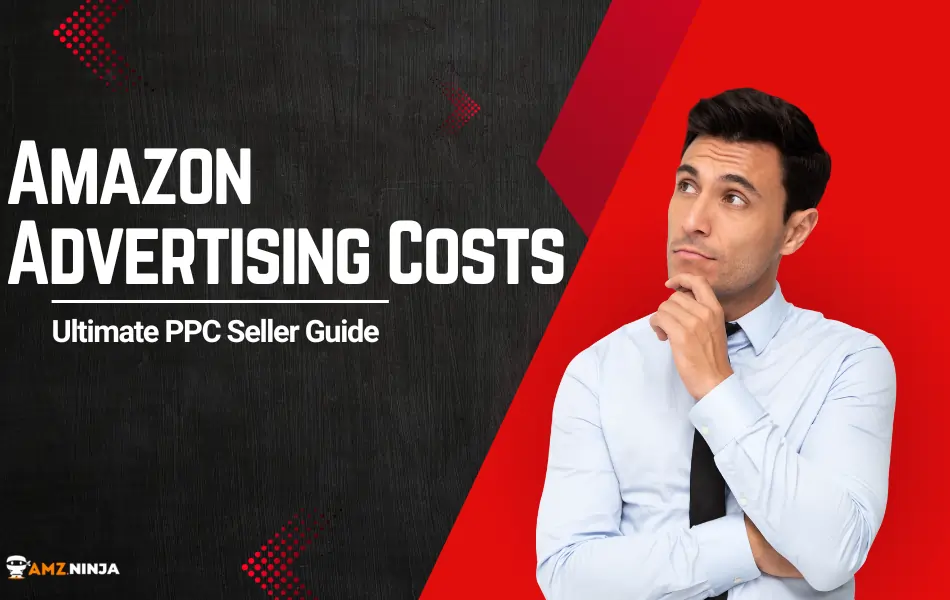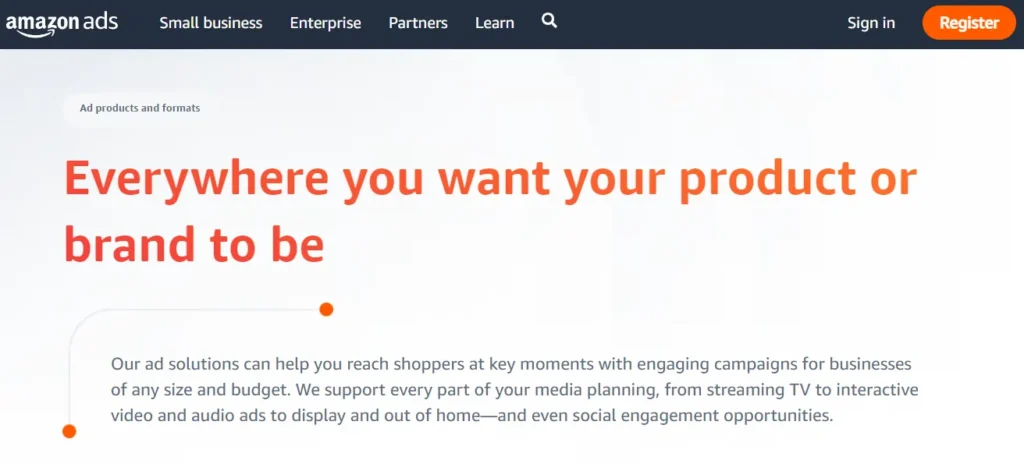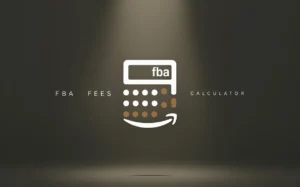
For sellers on Amazon, understanding the ins and outs of advertising costs is not just beneficial—it's essential for driving sales and maintaining a profitable business.
Amazon's vast marketplace offers a unique opportunity to reach a broad audience, but it also means facing stiff competition.
This guide serves as a comprehensive walkthrough of Amazon Advertising Costs, providing sellers with the knowledge to effectively manage their advertising budget. Whether you're new to Amazon PPC (Pay Per Click) or looking to refine your existing campaigns, this guide is your resource for achieving your marketing objectives.
The Pay-Per-Click Model (PPC)
Amazon's advertising platform operates on a Pay-Per-Click (PPC) model, which means that sellers only pay when a potential buyer clicks on their ad. The actual cost incurred by the seller for each click is determined by an auction-based system, where the highest bidder wins the ad placement.
The PPC model is beneficial for sellers because it aligns the cost with the potential for immediate sales, ensuring they are not paying for clicks that do not convert to sales.
Key Advertising Metrics
To effectively manage and understand Amazon advertising costs, sellers need to be familiar with two key metrics:
| Metric | Description | Formula |
|---|---|---|
| ACoS | Ratio of ad spend to sales | (Ad Spend / Sales) x 100% |
| RoAS | Revenue earned per dollar of ad spend | Sales / Ad Spend |
- Advertising Cost of Sales (ACoS): It is a crucial indicator of the effectiveness of an ad campaign, showing how much you spend on advertising for every dollar of revenue generated.
- Return on Ad Spend (RoAS): RoAS measures the amount of revenue earned for every dollar spent on advertising. It is the inverse of ACoS and helps sellers understand the return they are getting from their ad investments.
Sellers can leverage this knowledge to improve their advertising performance on the platform, aiming for a balance between visibility, sales, and advertising efficiency.
Types of Amazon Ads

Amazon provides several advertising options to sellers. Each ad type has its own cost structure and can serve different marketing objectives.
| Ad Type | Typical Use Case |
|---|---|
| Sponsored Products | Promoting single products |
| Sponsored Brands | Enhancing brand visibility |
| Stores | Showcasing brand and product range |
The costs for these ads can vary significantly, typically ranging from a few cents to several dollars per click or per thousand impressions. The choice of ad type should align with the seller's goals and budget constraints.
Bid Amount and Strategy
Amazon's auction-based system prioritizes higher bids for ad placement, influencing the visibility and frequency of ad appearance. Sellers can decide on their bid amount based on the product's profit margins, desired visibility, and competition.
| Bid Strategy | Description |
|---|---|
| Maximum Bids | Specifies the highest amount a seller is willing to pay per click |
| Dynamic Bids | Adjusts bids in real-time based on the likelihood of a sale |
Sellers can modify their bids at any time to manage costs effectively.
Factors Influencing Amazon Advertising Costs
For Amazon sellers, understanding the variables that affect amazon advertising costs is fundamental to optimizing their advertising strategy.
Keyword Targeting and Competition
The cost of Amazon ads is also influenced by keyword targeting. The competition for popular keywords can drive up the cost per click, as multiple sellers bid for top ad placement.
To maintain cost-efficiency, sellers should research and target a mix of high-competition and long-tail keywords. Understanding the difference between Amazon PPC and organic search results can aid in identifying optimal keywords that balance reach and cost.
| Keyword Type | Competition Level |
|---|---|
| High-Competition | Likely to have higher CPC due to more bidders |
| Long-Tail | Lower competition, potentially more cost-effective |
👉 Dig-out the Best Keyword with: Top Amazon Keyword Tools
Seasonal Fluctuations in Ad Cost Trends
Seasonal trends significantly impact amazon advertising costs. During peak shopping seasons, such as the holiday period, demand for ad space increases, leading to higher costs. However, data from Amazon Advertising indicates that in the 2020 holiday season, the cost-per-click (CPC) of Amazon Sponsored Products decreased substantially suggesting more efficient ad spending for advertisers during that period.
| Ad Format | CPC Decrease |
|---|---|
| Sponsored Products | 8% |
| Sponsored Brands | 12% |
| Sponsored Display | 6% |
Additionally, the cost per thousand impressions (CPM) for Amazon DSP display ads decreased by 10%, contributing to improved ROI. Sellers should closely monitor these seasonal advertising trends to make informed decisions about when and how much to bid on ads.
Industry-Specific Ad Cost Differences
Advertising costs on Amazon also vary by industry due to differences in competition, product margins, and consumer demand. For example, high-value electronics may have a higher CPC than more common household items due to greater competition and higher profit margins.
Advertisers on Amazon's demand-side platform (DSP) observed a 40% decrease in Click-Through Rate (CTR) year-over-year in the 2020 holiday season, which could indicate a potential shift in consumer behavior or market dynamics affecting specific industries.
By carefully considering these factors—Amazon sellers can develop a more efficient advertising approach. Balancing these elements will help manage costs while aiming for maximum return on advertising spend (RoAS).
Measuring Advertising Success
Evaluating the success of Amazon advertising campaigns is critical for sellers who want to ensure their investment is paying off. The main metrics used to measure this success are Advertising Cost of Sales (ACoS) and Return on Ad Spend (RoAS).
ACoS and Its Importance
ACoS stands for Advertising Cost of Sales. Essentially, it tells you what proportion of your revenue from sales is being consumed by advertising costs.
ACoS = (Ad Spend / Sales) * 100A lower ACoS means that you're spending less on advertising for each dollar of revenue you earn, indicating a more efficient campaign. Many sellers strive to maintain an ACoS between 15-25%, as this range is indicative of a healthy balance between profitability and visibility.
👉 A Better Understanding of ACoS
The Role of RoAS
RoAS, or Return on Ad Spend, shows how much revenue you earn for every dollar spent on advertising. Unlike ACoS, RoAS focuses on the revenue return of your ad spend rather than the cost.
RoAS = Sales / Ad SpendFor example, if you generate $20 in sales from an ad campaign that cost you $4, your RoAS would be 5, or 500%. It's crucial to note that RoAS does not account for costs such as inventory, cost of goods sold, and shipping.
Managing Amazon Advertising Costs
With the right strategies, sellers can control their amazon advertising costs and improve the efficiency of their campaigns.
Setting and Adjusting Bids
To remain competitive while avoiding unnecessary expenses, sellers must continuously evaluate and adjust their bids based on performance data and market conditions.
| Strategy | Description |
|---|---|
| Starting Bid | Set an initial bid based on Amazon's suggested bid or your own cost estimates. |
| Bid Adjustments | Increase bids on high-performing keywords and decrease on those underperforming. |
| Manual Bidding | Actively manage bids based on campaign metrics. |
| Automatic Bidding | Allow Amazon to adjust bids within a set range to target better-performing placements. |
By frequently monitoring campaign performance, sellers can understand which bids are yielding profitable sales and adjust accordingly.
Advertisers can also use ACoS (Advertising Cost of Sale) as a gauge for bid adjustments. A high ACoS may indicate a need to lower bids, while a low ACoS suggests an opportunity to increase bids.
Daily Budget Caps
By setting a Daily Budget Cap limit on how much you're willing to spend on ads each day, you can prevent overspending and ensure that your advertising costs remain within your financial plan.
| Strategy | Description |
|---|---|
| Initial Budget Cap | Set a daily budget based on your overall advertising budget. |
| Budget Adjustments | Increase the budget for high-performing campaigns or decrease for low-performing ones. |
| Monitoring Spend | Regularly check your campaigns to ensure spending aligns with your budget caps. |
By combining strategic bid management with careful budget capping, Amazon sellers can control their advertising expenses while striving for optimal campaign performance.
- Regularly monitor your ACoS and RoAS to ensure your campaigns remain profitable.
- Experiment with different bid strategies and ad placements to find what works best for your products.
- Utilize negative keywords to avoid wasting ad spend on irrelevant searches.
- Stay up-to-date with seasonal trends and industry-specific ad cost differences to make informed decisions.
Optimizing Amazon PPC Campaigns
To maximize the return on investment for amazon advertising costs, Amazon sellers must continually optimize their pay-per-click (PPC) campaigns.
Keyword Optimization
Sellers must select keywords that accurately represent their listings and resonate with their target customers.
There are two primary keyword targeting strategies offered by Amazon for Sponsored Product ads:
- Manual Targeting: With manual targeting, sellers have the autonomy to handpick keywords and adjust bids at the keyword level
- Automatic Targeting: Allows Amazon to manage ad displays and customer targeting, exclusive to Sponsored Products campaigns.
A strategic approach to keyword optimization involves:
Sellers can also implement tactics such as Amazon dayparting, scheduling campaigns to run during peak traffic hours, to optimize ad spend and augment sales while maintaining a firm grip on advertising expenses.
Campaign Strategies (Dynamic Bidding)
Amazon's advertising platform offers advanced features that empower sellers to fine-tune their campaigns for optimal performance. Amazon offers dynamic bidding strategies for Sponsored Products, enabling real-time bid adjustments based on the projected likelihood of a sale.
Dynamic bidding allows sellers to adjust their bids in real-time based on the likelihood of a sale. Sellers can choose from several dynamic bidding options:
Advertisers can align with their campaign bid strategies with specific advertising goals—be it maximizing clicks, targeting a specific ACoS (Advertising Cost of Sale), or targeting RoAS (Return on Ad Spend).
Adjust Bids by Placement
Adjust Bids by Placement is a feature that allows sellers to set percentage increases for bids depending on where the ad is placed on Amazon's pages.
| Placement Type | Bid Adjustment Range |
|---|---|
| Top of search (first page) | 0% to +100% |
| Product detail pages | 0% to +50% |
| Rest of search | 0% to +100% |
Sellers can optimize their Sponsored Products campaigns to better meet their desired performance metrics by deciding where their ads appear and how much they spend on each ad placement, targeting areas with higher conversion potential.
Helium 10, a leading all-in-one software suite for Amazon sellers, offers a powerful PPC tool designed to simplify and optimize Amazon advertising campaigns. This tool provides sellers with a comprehensive set of features to manage their PPC campaigns effectively, helping them to reduce costs and increase profitability.
With Helium 10's PPC tool, sellers can automate bid adjustments based on real-time data, ensuring that their campaigns remain competitive and cost-effective. The tool also provides detailed analytics and reporting, allowing sellers to identify high-performing keywords, monitor campaign performance, and make data-driven decisions to improve their advertising strategy.
By leveraging the power of Helium 10's PPC tool, Amazon sellers can streamline their advertising efforts, reduce their ACoS, and maximize their return on ad spend, ultimately leading to greater success on the platform.
Enter code: BLOGE6M20 at checkout
Staying Competitive!
In conclusion, mastering the nuances of Amazon Advertising Costs is a critical component for sellers aiming to thrive on the platform. The secret to success lies in the ability to adapt—constantly testing, measuring, and refining your approach based on concrete data and insights from Amazon sales.
Remember, the Amazon marketplace is always changing, and so should your advertising tactics!
By embracing the dynamic nature of Amazon PPC campaigns and staying informed on the latest trends and tools, sellers can craft strategies that not only keep pace with the competition but also pave the way for increased visibility and sales.







